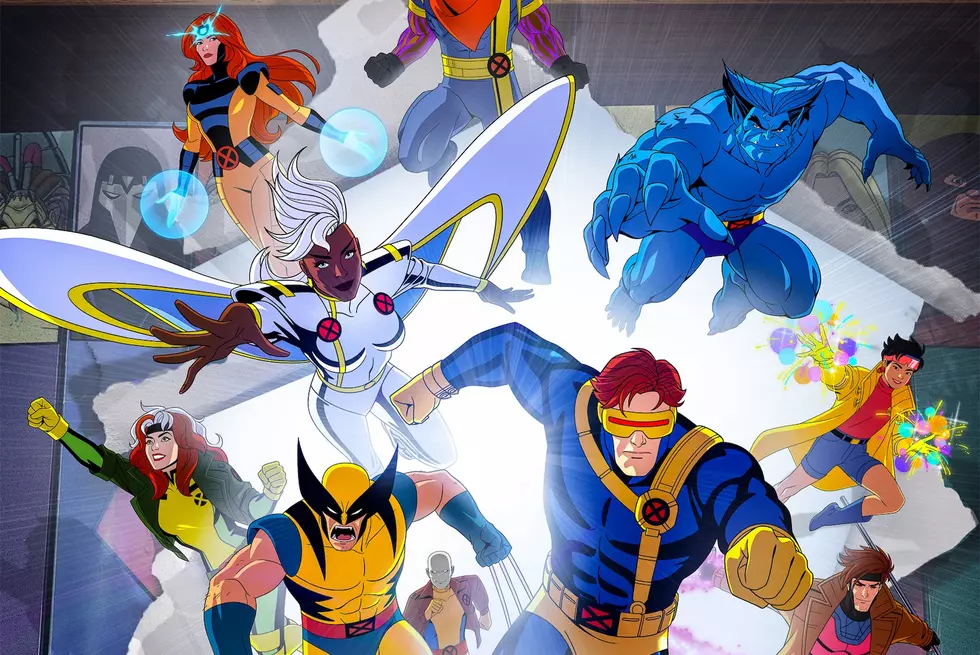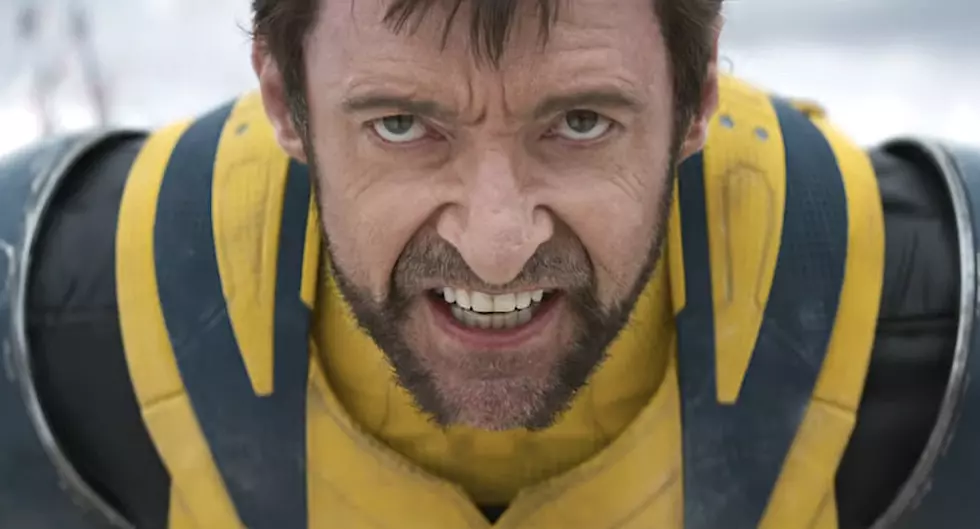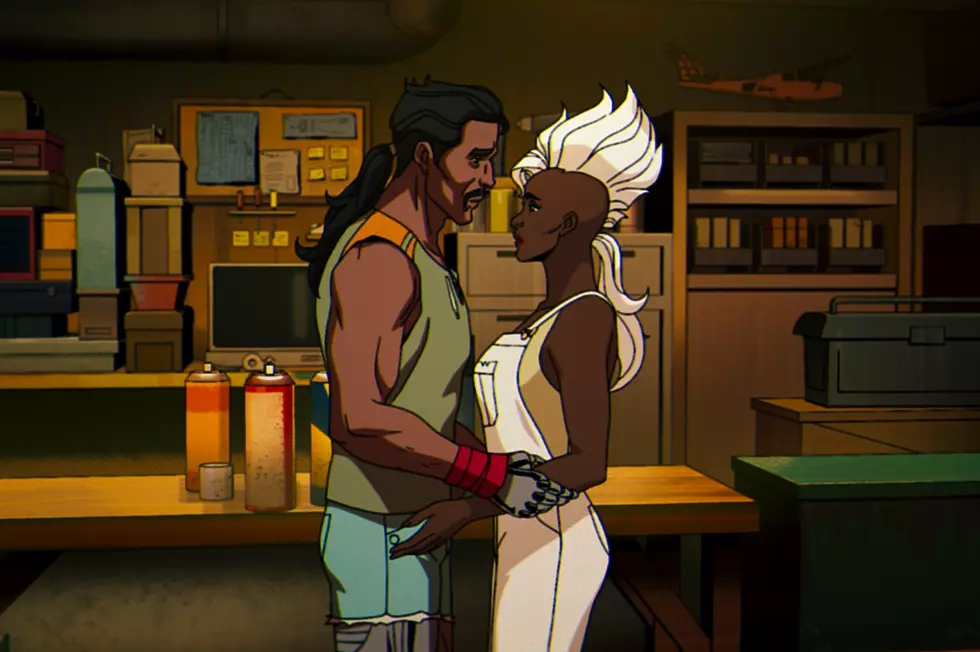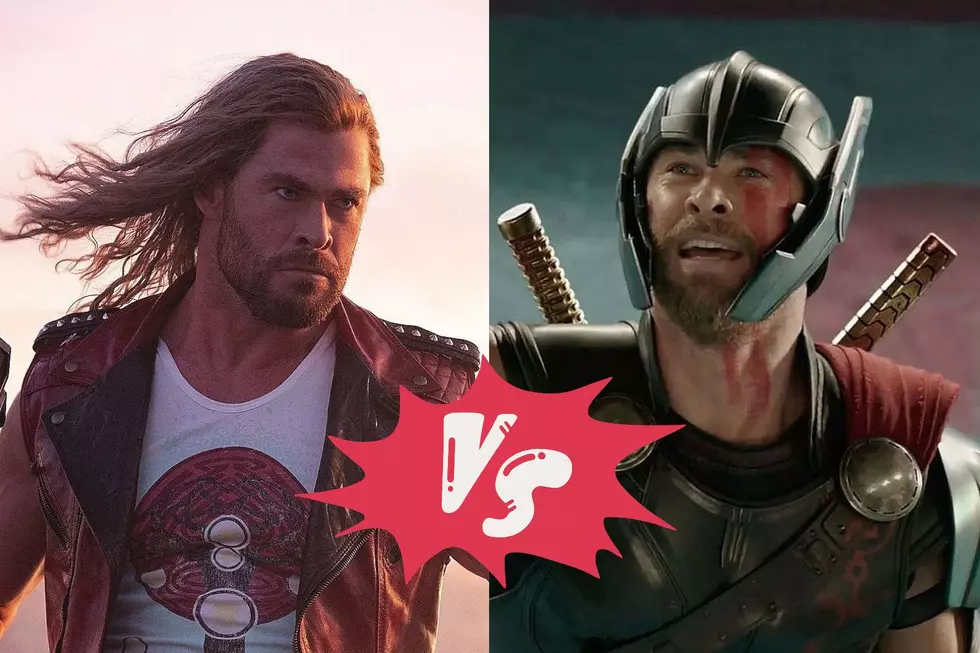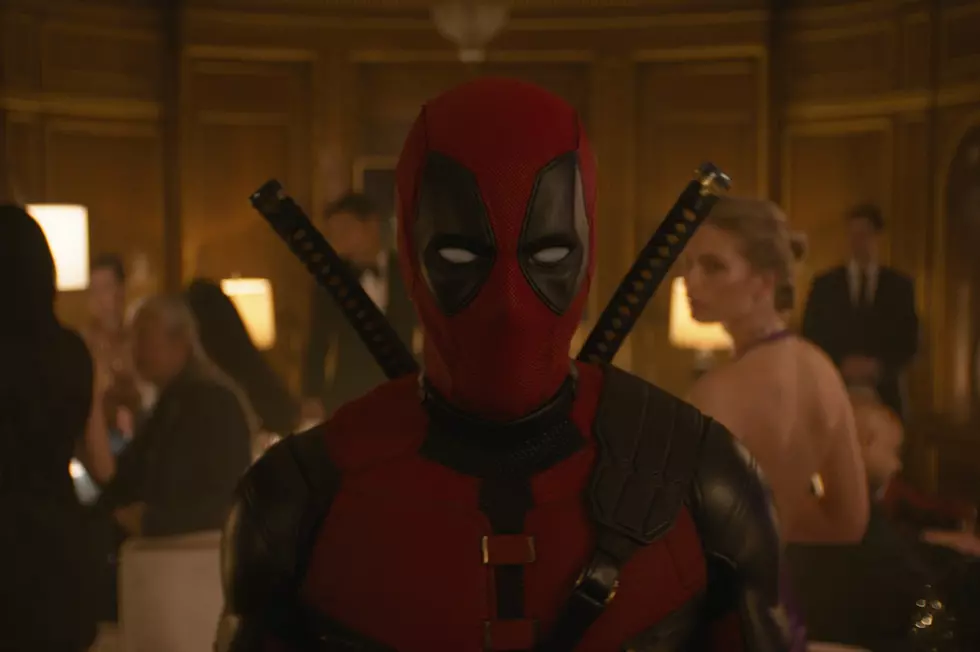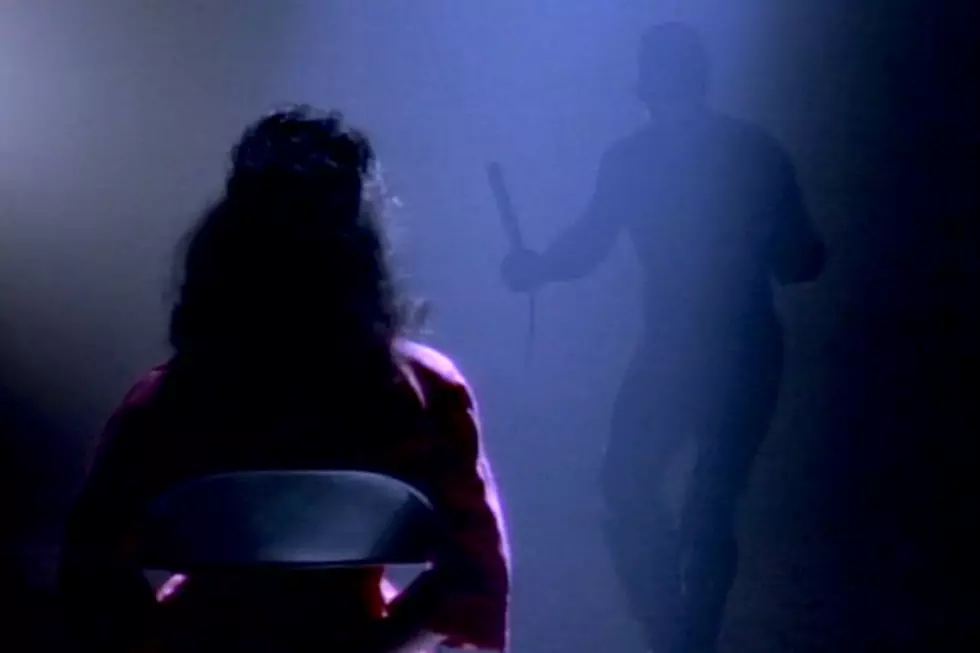
The Man Without Fear (Or a Network): The First, Failed ‘Daredevil’ TV Show
He’s called “The Man Without Fear”: Blind New York City attorney Matt Murdock, who secretly lives a double life as Daredevil, the vigilante who protects the brutal streets of Hell’s Kitchen. On Friday, The Man Without Fear comes to Netflix in a brand-new original series that brings Marvel and its hugely successful Cinematic Universe to streaming television. Daredevil is the first of several Marvel shows on Netflix — but it’s not the first Daredevil show on television. In fact, The Man Without Fear made his TV debut over 25 years ago in a forgotten film that was nonetheless a significant moment in Marvel’s transformation from comic-book publisher to one of the most powerful studios in Hollywood.
That moment was titled The Trial of the Incredible Hulk, a TV movie that originally aired on May 7, 1989. The film was a continuation of the popular Incredible Hulk television series of the late 1970s and early ’80s starring Bill Bixby as scientist Bruce David Banner. Six years after the series’ cancellation on CBS, it was revived as a trio of TV movies on NBC. The first, The Incredible Hulk Returns, aired in May of 1988. Following its surprise ratings success, The Trial of the Incredible Hulk was put into production, and aired the following year.
Outside of the basic of premise of a man who transforms into a giant, gamma-irradiated monster (played by champion bodybuilder Lou Ferrigno), the old Incredible Hulk TV series bore little resemblance to the old Hulk comic book. The show was largely a thinly-disguised retread of The Fugitive, the series about a doctor wrongfully convicted of a crime, who goes on the run to prove his innocence. Bixby’s Banner worked much the same way; following a horrific lab accident, he hits the road looking for a cure to his transformations into the Hulk. With very few exceptions, TV’s Hulk never got into fights with other super-powered beings. None of his arch-villains from the comics — The Leader, Abomination, General “Thunderbolt” Ross — ever appeared, nor did any other Marvel Comics characters. TV’s Incredible Hulk was set in a self-contained and thoroughly mundane universe; The Hulk was literally its only incredible resident.
That all changed when the Hulk returned in 1988. The Incredible Hulk series was produced by Universal Television under license from Marvel; The Incredible Hulk TV movies were supervised by New World Pictures — Marvel’s parent company at the time — who took the unprecedented step of making their Marvel movies look more like Marvel comics. In The Incredible Hulk Returns, Bixby meets Thor, albeit a Thor who didn’t look a whole lot like the Thor of the comics. When The Incredible Hulk Returns became a hit, New World tried to replicate its formula in The Trial of the Incredible Hulk. This time, Banner is framed for (another) crime he didn’t commit and his lawyer in the case is one Matt Murdock, who draws The Hulk into his one-man war on criminal mastermind Wilson Fisk, AKA The Kingpin (although technically he is not AKA The Kingpin in The Trial of the Incredible Hulk because no one refers to him by that name).
The broad strokes of the Daredevil character — his name, powers, and origin — are all more or less faithful to the story created by Stan Lee and Bill Everett in the very first Daredevil comic from 1964. Some of the finer points, however, got lost somewhere in translation. New York City, for example, became a faceless generic metropolis (the movie was filmed in Vancouver), and for all of Matt’s obsessive compulsion to protect it from Fisk’s evil machinations, he’s not so in love with the place that he actually feels the need to live there. In fact, he’s got a nice house in the suburbs.
Daredevil was played by former teen idol and actor Rex Smith, who bore a decent resemblance to the Matt Murdock of the comics, although he was missing the character’s trademark red-tinted glasses. Matt’s also missing his trademark red costume; instead, director Bill Bixby and the show’s producers gave him an all-black leotard and mask.
Purists hate and mock this outfit, and I do wish it had some kind of “DD” insignia or logo somewhere on it, but it does make a certain amount of sense. It’s functional in the way it helps Daredevil hide in the shadows, and it’s only logical that a blind man would choose simple, effective form over flashy sartorial style. It also looks really cool in nighttime or dimly-lit scenes (see the image at the very top of this piece). In well-lit close-ups and daytime shots, not so much.
Matt Murdock doesn’t wear glasses, but for some reason Wilson Fisk does, and they are the ’80siest glasses ever made.
Besides his generally stocky physique, Rhys-Davies doesn’t look much like comics’ Kingpin. He’s not bald and he’s got a beard (and those sweet shades). According to the IMDb, Rhys-Davies offered to shave his head for the part, but the producers decided against it. Beyond those superficial aspects of the character, though, Rhys-Davies actually makes a great Wilson Fisk. He’s cold, arrogant, and utterly intimidating. It’s too bad the Daredevil series didn’t happen, it would have been fun to see more of Rhys-Davies’ Kingpin.
Though The Trial of the Incredible Hulk was designed as a backdoor pilot for a possible Daredevil spinoff, the character’s traditional supporting cast is missing-in-action as well. Matt’s best friend and partner Foggy Nelson and his secretary and girlfriend Karen Page were merged into a single character named Christa Klein (Nancy Everhard), who works with Matt at his practice and serves as a potential love interest. The staff of Murdock & Klein also includes an stuffy military veteran named Al Pettiman, the practice’s assistant, gofer, and comic relief. Finally, there’s a Commissioner Gordon-esque figure named Captain Tendelli (Joseph Mascolo), the one good cop on a very dirty police force. He inspires Murdock to take up his costumed crusade against Fisk, and inadvertently names him when he suggests to the press that “maybe some kind of crazy daredevil” could succeed where corrupt law enforcement failed. He also feeds tips to Daredevil via an “untraceable” cellular phone that is sadly never referred to as “the Devilphone.”
The Trial of the Incredible Hulk isn’t much of a Hulk story. Banner spends a bunch of it in jail, and contrary to the title, the Hulk is never even put on trial (there’s one big scene in a courtroom, but it’s a dream sequence). On the other hand, despite the deviations from the source material, The Trial of the Incredible Hulk is actually a pretty decent Daredevil story. The action is surprisingly solid, and the lighting and atmosphere is effectively moody. Admittedly, the show also comes with a fair amount of cheese. Murdock is so worried about Fisk destroying his life and reputation that he refuses to tell any of his allies about his secret life as Daredevil, yet he reveals his secret to Banner after about five minutes of conversation with the guy. And the show eliminates Stick, the master martial artist who trained comics’ Matt Murdock to be a superhero, which means he has to teach himself the martial arts in his home gym, an enormous facility which includes rings and a pommel horse. Basically, Daredevil practices gymkata.
Like The Incredible Hulk Returns, The Trial of the Incredible Hulk was a solid ratings hit. So why did it flop as a backdoor pilot? Certainly its timing could have been better. A little over a month after The Trial of the Incredible Hulk premiered on NBC, Tim Burton’s Batman debuted in theaters and radically shifted the way Hollywood and audiences thought about comic books onscreen. Burton didn’t mask Batman’s pulpy roots, he embraced them, soaking the character in gothic atmosphere, impossible architecture, and extraordinary characters.
In short order, Batman’s record-breaking success inaugurated a whole new era of comic-book movies. The Trial of the Incredible Hulk belonged to the previous one, where Hollywood producers looked down on comics and tended to leech out as much of their comic book-ness as possible. In the case of The Incredible Hulk, that meant going so far as to change Banner’s first name to David, because, in the minds of the series’ producers, the alliterative Bruce sounded too cheesy. It’s easy to see how that approach applied to the telefilm’s conception of Daredevil: No bright, outlandish costume, no tinted sunglasses, no bald Kingpin with purple cravat and diamond-tipped cane. Whatever its strengths, this Daredevil was tied to the dated style (and budgetary limitations) of a decade-old television show.
The Incredible Hulk’s understated approach worked for its time, but that time was already gone by 1989. After one final TV film in February of 1990, the aptly-named The Death of the Incredible Hulk, the show was finally ended for good. But the influence of The Trial of the Incredible Hulk and its Daredevil continues to be felt. The Hulk TV movies represent the first time — not just in the history of The Incredible Hulk, but the history of the entire Marvel empire — that Marvel superheroes from different comics shared the screen together. Today, we take shared company-wide movie continuity as a given. In 1989, it was a revolutionary idea. In retrospect, these films were the earliest baby steps toward a “cinematic universe” of Marvel characters.
The Trial of the Incredible Hulk also features another important Marvel first: Stan Lee’s first live-action cameo, as a member of the jury in the courtroom scene. Eventually, Lee’s Hitchcockian appearances would become a beloved ritual of almost every single Marvel movie.
And say what you will about that “cheesy” all-black costume, but when Daredevil debuts on Netflix this Friday he’ll do so wearing a nearly identical outfit that was clearly inspired by his look from his TV debut. It’s almost like The Trial of the Incredible Hulk worked as a backdoor pilot — it just took 25 years for the show to get a green light.
The Trial of the Incredible Hulk is currently available for instant streaming on Hulu Plus. You can also buy it on DVD or rent it on Amazon.
Every Marvel Movie Ever Made, Ranked From Worst to First
More From ScreenCrush

